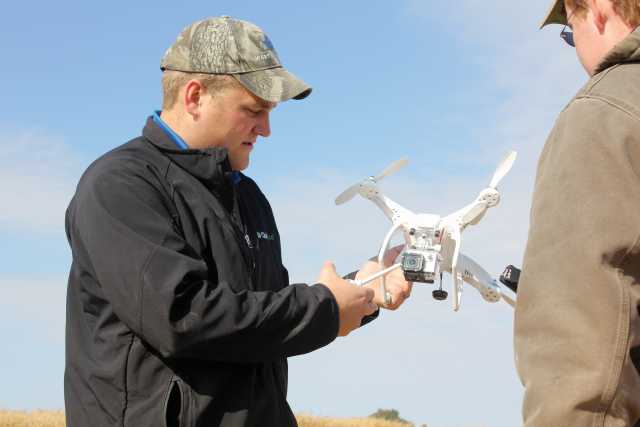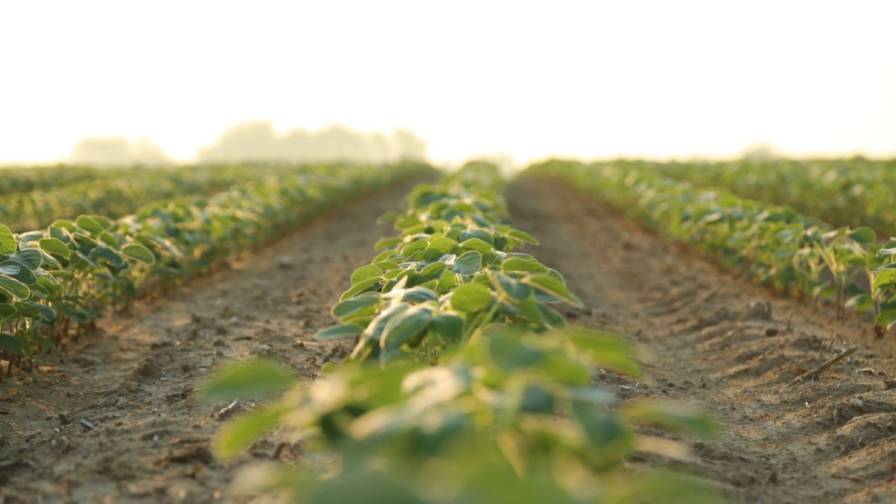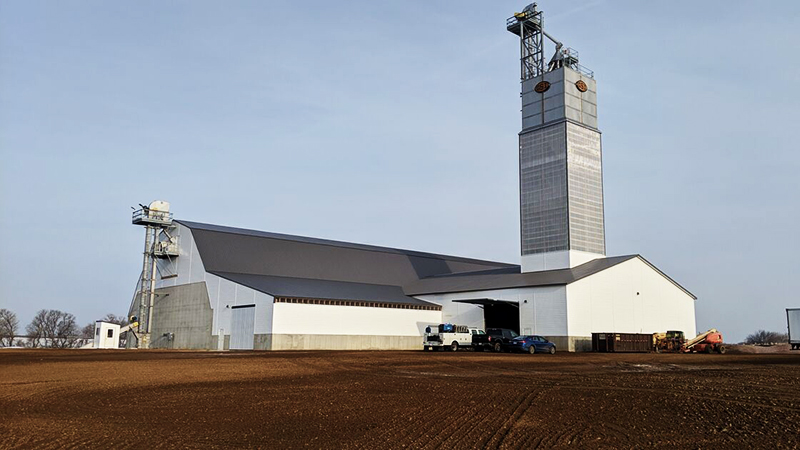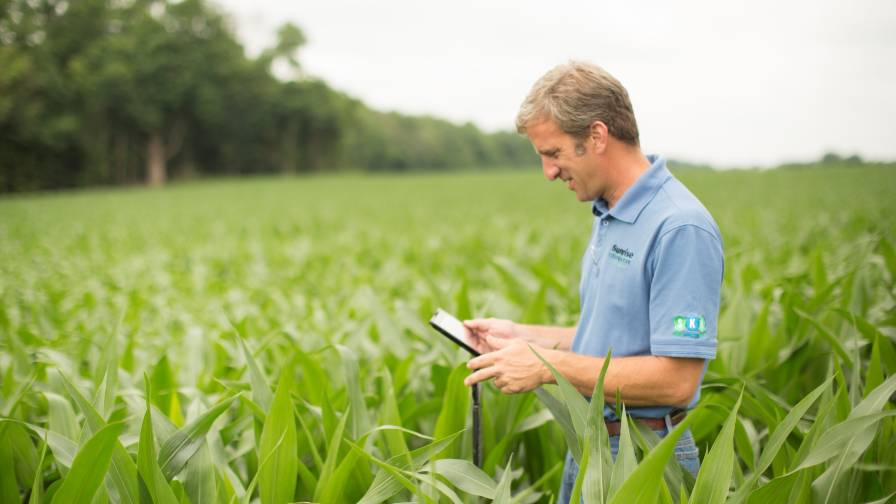State Of Precision Ag 2016: Gut Check Time For Value
There’s no denying that precision technologies and practices are more vibrant than ever. Equipment manufacturers have fine-tuned the hardware for guidance, autosteering, and application control. Wireless, internet and Cloud resources are making precision tasks quicker and easier. Data collection and analysis is getting more refined and useful. And corporations are offering powerful new resources for monitoring crop variables.
But low commodity prices have cast a long shadow over farm budgets. Growers and retailers are feeling the pinch.
For this annual report, CropLife® magazine talked to nearly a dozen industry representatives — growers, retailers and precision support providers — to see how they rate the state of precision ag this past year. Via Survey Monkey, our editors also got input from just over 200 managers at cooperatives, independent dealerships and national/regional retail chains.
All participants shared some concerns about decreased precision spending. About 8% of survey contacts reporting a significant negative impact on interest in precision services. Forty-one percent saw a modest negative impact, while 27% saw no detectable effect. A number of respondents described how sales of certain items have actually gone up, and many expect a decisive upturn once grower incomes rise.
The clear message for 2016: Growers are pinpointing and supporting the precision strategies that bring clear value to their operations today.
Economic Challenges
The economy has pushed growers to re-think some of their approaches to equipment and practices. For instance, Jeremy Wilson, Technology Specialist at Crop IMS, Effingham, IL, reports that “there’s not a lot of new equipment coming to the farm now.” Growers are moving around steering and application equipment, GPS receivers and displays. In the past, Crop IMS went through a spell where if customers traded in a tractor, they left the precision technology in it, and Wilson sold them a new set for the new tractor to come.
Growers are also fixing what they already have, and Wilson says “the one kick-up we’ve seen is service parts. We’re just fixing more stuff.”
A number of contacts reported precision business was actually hit harder over the past couple of years, but sales are starting to come back. The reason, even though crop prices are still down? Customers are realizing that this technology will make money and provide an ROI. The feeling is they need it now more than ever because margins are so tight.
Wilson says this down cycle in new equipment sales is probably the worst he’s seen in his 15 years in the business, but he’s optimistic. Technology and data are such an important piece of what ag is doing today, they bring value, he emphasizes. And Wilson has growers telling him that as soon as the economy turns around a little bit, they have a list of precision things they want to do.
Areas Of Strength
Growers are making nutrient management a priority. CropLife 100 co-op South Dakota Wheat Growers, Aberdeen, SD, has seen “absolutely zero cutbacks” in precision service purchases, says Brent Wiesenburger, Precision Ag Manager.
“We’ve seen the acres in our MZB (Management Zone Based) program actually increase YTD in this economic downturn,” he reports. “That tells me producers and our staff really understand why we are doing this stuff! We’re getting acres enrolled that producers only have a single year land lease on — which tells me they see instant returns on the precision ag investment.”
At Sunrise Cooperative, Fremont, OH, equipment sales have been strong, and grid soil sampling has been going up this past year — over the previous three years. Variable-rate planting prescriptions have increased every year, and VR applications of lime, phosphorus (P), and potassium (K) have remained steady as growers see value in managing nutrients more closely.
Craig Houin, Data Management Lead, reports a recent comment from a customer: “I’ve grid sampled and VRT limed for three sample cycles and have seen my pH’s maintain adequate levels with less lime each year. I see a huge savings in lime expense and know my fields are doing well due to VRT and measured with grid sampling.”
“Right now our biggest gains are from analyzing good yield data,” says Ben Flansburg, BCA Ag Technologies, Medina, NY. “We’re looking at that data against all farm practices like seed, fertilizer and anything else that is being mapped. This is helping us figure out where our biggest gains are coming from and where we can cut back. These programs are making big differences right away on our cost per acre and return on investment.”
Yield mapping, the data cornerstone of precision ag, continues to gain customers. In fact, Shane Rollins, Precision Ag Consultant with Farm Service Inc., Walnut Ridge, AR, says his team has grown this service — as well as yield monitor calibration — to an all-time high. Then too, there’s higher demand to simply put more GPS equipment on yield monitors.
Wilson lists another high point for precision. “You could say if it relates to a planter, even in these tough conditions, we’ve been selling it and growers are still using it, whether it’s individual row shut-offs, downforce pressure controls or hydraulic drives,” he says. In fact, even at presstime in May, growers were adding technology to their planters.
Wilson estimates that fully 50% to 60% of the growers his company works with have some of the latest planter technology.
Customers at Ag Info Tech, LLC, Mount Vernon, OH, have also been specifically focusing on planting. The two biggest returns the company is seeing are in 1) hydraulic downforce equipment and 2) fixes for singulation problems (whether that’s using an electric drive or just adding a vacuum in the planter, via Precision Planting’s vSet Meter). Both of these technologies can have a huge economic impact for growers, says Tim Norris, CEO. Hydraulic downforce improvements can increase corn yields up to 11 bushels per acre, while improved singulation can improve yield up to 5.1 bushels per acre.
Addressing UAVs
Opinions on UAVs ran hot and cold. General consensus was they are going to have a place in agriculture — 40% surveyed agree that UAVs will play a significant role in their own precision program in five years — but stakeholders interviewed noted that users face several hurdles including cost, FAA regulations, qualified staff, and time constraints.

Forty percent of ag retailers surveyed said UAVs will play a significant role in their own precision program in five years. Pictured: A West Central Coop agronomist shows off the company’s UAV.
Illinois Grower Wentworth looked into purchasing a drone but felt it wasn’t going to provide actionable information. “If some growers got them, they’re sitting in the corner closet somewhere already,” he believes.
He chooses to focus on preventative practices, with the goal of providing 100% of what the seed needs so it can reach 100% of its potential. He believes that often, once satellite or aerial imagery is available and a problem is spotted in a field, it may be too late.
United Prairie’s Grote says that UAVs are pricey, especially to get an industrial grade unit that can carry a good, high res camera capable of taking geo-referenced NDVI images. And they still require someone to go out and spend the time to fly them over the fields (even if they have autopilot, someone has to be there to plot the course and change the batteries).
“After the data has been collected someone has to stitch all of that imagery together and process it for it to make any sense,” he adds. “By the time you do all of that, I don’t see where UAVs save time, save money, or are a much easier alternative to what we already have. And if you crash one, things just really got expensive.”
Grote would see value if they delivered actionable information other than just NDVI imagery — something like picking out Palmer amaranth from a field with waterhemp in it. And, “as cheap as the quad copters are, every grower ought to have one to get a simple in season overhead look of what is going on in their fields. You can tell a lot from just an overhead picture,” he points out.
Wheat Growers’ Wiesenburger doesn’t see a big need for a fleet of UAVs and pilots to man them. While he acknowledges producers need a spot snapshot from time to time, he’s not sure how the units can become a scalable solution for a large retail cooperative.
Sunrise Coop’s Houin agrees. He says that UAVs in the hands of growers taking photos or video of crops are great — but not realistic for the retailer to manage or provide. “An agronomist cannot handle the file sizes generated from UAV imagery and return them to the hands of the grower in a timely manner consistently enough to bring the concept to market,” says Houin. “We tested a UAV on 10 fields last year without any success, measured on ease of use and value to cost perspective.”
Enter Aker, a service primarily aimed at ag retailers, that promises to answer many concerns that growers and retailers raise. Headquartered in Winnebago, WI, Aker is a service of Leading Edge Technologies that was launched earlier this year by Grower Todd Golly and Entrepreneur Orlando Saez. They’ve garnered investor support from ag retailers, growers and a strategic large ag supplier. Aker does sophisticated image processing, then downloads a base agronomy interpretation into a directed-scouting mobile app that helps retailers quickly find high-risk zones. The company offers a 3-day money back turnaround guarantee.
Aker is training about 20 pilots this season to cover Minnesota and Iowa at least three times during the growing season using SenseFly eBee drones. The mission is to do field monitoring on the same scale that Climate Corp. is doing with satellites — but with more timely delivery and a 2 cm per pixel resolution.
Aker is currently doing work for WinField, Helena, and UFC, among others. Saez suggests that retailers prefer to enroll smaller (about 200 acres) highly variable fields to test the efficacy of the service. He reports since January, Aker has already locked in most of its scouting capacity for 2016.
One pull for big crop protection product investors? “By introducing real in-season stress evidence, we help accelerate the adoption of herbicides and fungicides and new chemistries,” says Saez, “especially with glyphosate resistance increasing.”
Wish Lists
Our precision stakeholders had a varied list of things they want, but don’t have access to right now:
High speed internet. Only 15% of the managers surveyed could say the wireless service in their service area was highly reliable and consistent, while 67% called it fairly reliable and consistent. Poor service was called a “problem too often” or a “significant hindrance to business by almost 20% of respondents.”
Rollins testifies to the seriousness of the issue. “I would have to say that access to high-speed internet is by far and above the most limiting factor in our quest to provide solutions to problems in our area,” he says. “Before moving to Arkansas three years ago, I worked in both Michigan and Ohio. Those states have much better communication infrastructure than this state. Farmers have very few cellular “dead zones,” and have far greater access to internet in many other states compared to Arkansas.”
Good data. Like many in the industry, Wentworth is questioning the quality of the data even he is generating on his farm. Data that he’s using to try and make “really, really good decisions” that either save money or make his operation more efficient.
Bigger server. Sunrise Co-op’s Houin needs a server big enough and fast enough to do everything he’d like to. For one, just having the ability to store the historical data and have enough room to house new data securely will be a necessity soon. In fact, much of his company’s work today is software related — and the emerging Internet of Things (IoT) technologies will continue to drive much of Sunrise’s work going forward.
Expertise/human capital. Newer hires are coming out of college with greater training and exposure to technology than ever, says GROWMARK’s Parks, but it is still hard to replace some years of experience. Sixty-two percent of dealers surveyed said one of their biggest concerns is having enough technically competent employees to work in their precision program.
They seemed to be committed to finding that talent, however, as fully 42% of respondents increased the number of staff working on precision at their reporting location.
Over the last year and a half, Wentworth says that his farming operation has put together about as good a tech services team as it ever has. He draws on the expertise of one young rep at his local retailer, Evergreen FS, and the know-how of a local Case IH dealer sales rep.
“If you don’t have a technical guy supporting equipment, the tens of thousands of dollars you’ve spent are useless,” Wentworth emphasizes.
Time. Wiesenburger specifically cites time to evaluate evolving products. “With $5.6 billion of venture capital money hitting ag in 2015, there are a lot of emerging technologies in the ag space,” he points out. It’s a full-time job evaluating these products and discovering their true value before offering the product to a customer base.
Promise Ahead
Each year, industry members ask what the next big thing will be. “At times you could say it all is promising,” Parks reflects. “Getting to the value is the harder part. The easy stuff is done.” Here is what our precision contacts have high hopes for:
More planter technology. South Dakota Wheat Growers is expanding its MZB (Management Zone Based) program with the addition of multi-hybrid/variety technology, using Precision Planting’s vSet Select product. “We have a great support staff to install and help maintain it as well as a very diverse agronomy staff that can truly add value to the hardware by creating the right agronomic mix of hybrids/varieties and plant population for MZB Management Zones,” Wiesenburger explains.
“I believe this is truly the next low hanging fruit that will break us through into the next yield brackets in both beans and corn,” he says. “Our producers that ran that product last year are very excited about the possibilities moving forward and continuing to learn more about these products that can truly add value to their bottom line year number one.”
Ag Info Tech’s Norris believes electric drives on planters will be huge. He says about 10% of his customers use them now — and anticipates that number will reach 30% to 40% in the next three years. The technology takes all the noise out of the drive train, improving singulation and spacing, and adds turn compensation to prevent under- and overplanting.
Satellite crop monitoring. More growers will utilize high frequency/large resolution satellite imagery to track crop growth over time to determine plant vigor/development to localize scouting and field performance.
Sensors. The sensor market is looking stronger all the time, says BCA Ag Technologies’ Flansburg. They will help gain more information, faster, for better on-farm decisions. In fact, Illinois grower Wentworth believes there will be a time when sensors, possibly utilizing nanotechnology, will be in fields providing data 24/7 on soil, seed, and plants.
Crop modeling. Crop modeling of multiple nutrients and their management looks very promising. The goal: mathematically predict cost/benefit of in-season nutrient management programs, says Sunrise Co-op’s Houin. He also sees more modeling to predict yield based on weather and management to assist growers with grain marketing possibilities.
Partnerships. At Wheat Growers, staff are using WinField’s seed placement tools — with information fed from WinField’s Answer Plots. “This is valuable data when we think about hybrid/variety placement getting more complicated in the future with the multi hybrid/variety planters,” says Wiesenburger. “It will be tools like this that will be very powerful to help our agronomy staff make the proper recommendations.”






